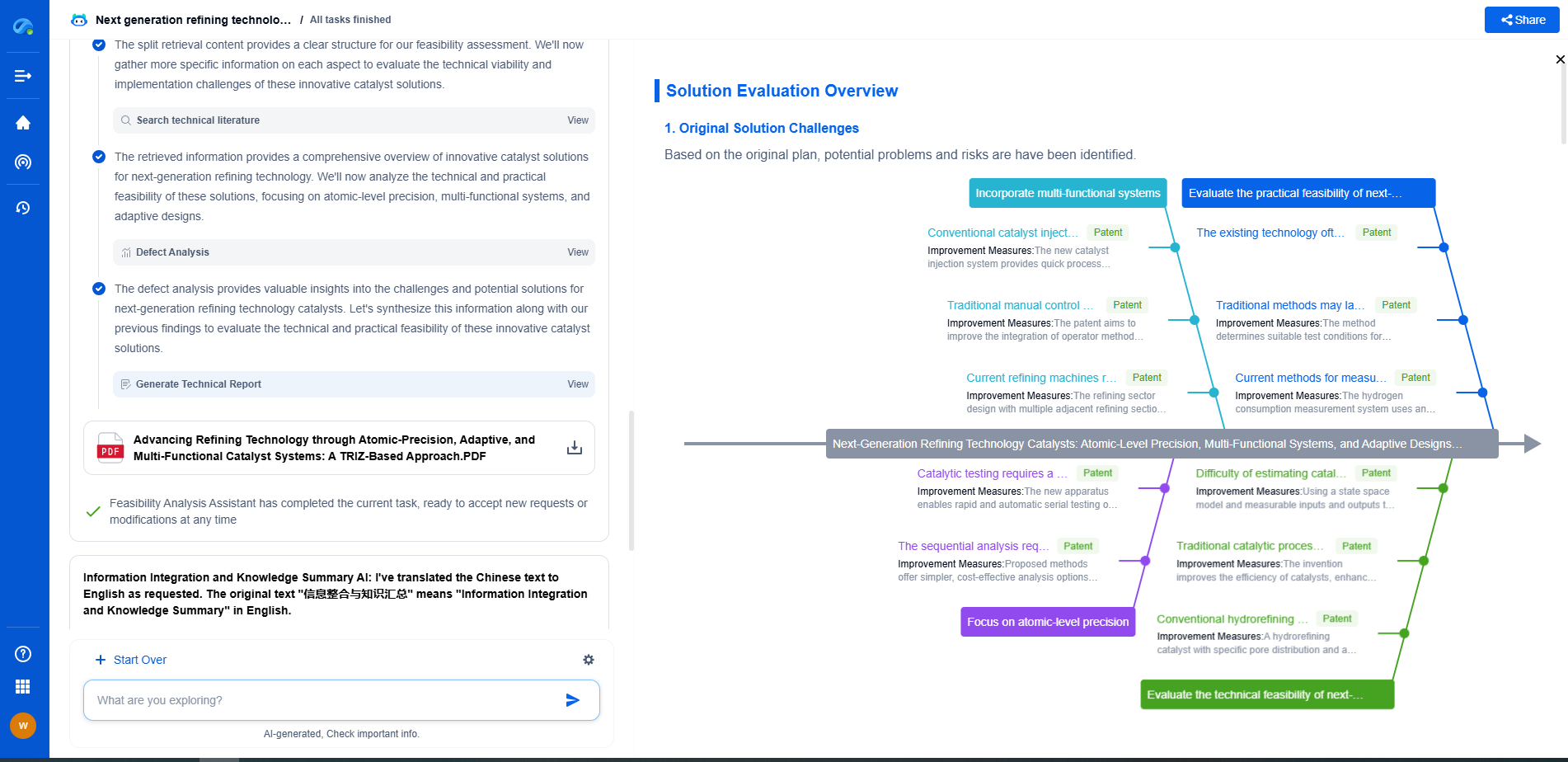AI-Optimized Gear Ratios for Dynamic Robot Movements
JUN 26, 2025 |
In the world of robotics, gear ratios play a crucial role in determining the efficiency and effectiveness of a robot's movement. A gear ratio is the ratio of the number of teeth on two meshed gears or the ratio of the diameters of two gears. This ratio can significantly affect the torque and speed of the robotic system. When optimized correctly, gear ratios can enhance a robot’s performance, allowing for smoother, faster, and more efficient motion.
The Importance of Dynamic Movements
Dynamic movements in robotics refer to the ability of a robot to adapt its motions to varying conditions and tasks. This adaptability is essential in environments where the robot needs to perform multiple functions, often under unpredictable circumstances. For example, a robot might need to transition from a high-speed dash to a precise, slow maneuver when handling delicate objects. Achieving such versatility requires the careful optimization of mechanical components, including gear ratios.
Integrating AI with Gear Systems
Artificial intelligence (AI) has revolutionized numerous industries by providing systems with the ability to learn and adapt. In robotics, AI can be leveraged to optimize gear ratios dynamically. By using AI algorithms, robots can analyze their performance in real-time and make adjustments to their gear systems to suit immediate operational demands. This can result in improved energy efficiency, reduced wear and tear, and overall better performance.
AI Algorithms for Optimizing Gear Ratios
Several AI techniques can be employed to optimize gear ratios in robotic systems. Machine learning algorithms, such as genetic algorithms, neural networks, and reinforcement learning, can be used to identify and implement optimal gear settings. These algorithms allow robots to learn from their environment and tasks, gradually improving their gear ratio configurations for specific activities.
For instance, genetic algorithms can simulate the process of natural selection, evolving gear settings over time for enhanced performance. Neural networks can predict the best gear ratios based on past data, while reinforcement learning algorithms can enable robots to experiment with different ratios and learn from successes or failures.
Benefits of AI-Optimized Gear Ratios
The integration of AI in optimizing gear ratios offers numerous benefits. Firstly, it enhances the adaptability of robots, enabling them to handle a variety of tasks with improved precision and efficiency. Secondly, it contributes to energy savings by fine-tuning gear settings to reduce unnecessary power consumption. Thirdly, AI-driven optimization can lead to longer lifespan of the mechanical components by minimizing excessive strain and wear.
Moreover, AI-optimized gear ratios can significantly improve the safety and reliability of robotic systems. By constantly adjusting to the optimal configurations, robots can avoid errors and malfunctions that might arise from suboptimal gear settings. This is particularly important in applications such as autonomous vehicles or surgical robots, where precision and reliability are critical.
Challenges and Future Prospects
Despite its advantages, the implementation of AI for optimizing gear ratios in robotics is not without challenges. The complexity of developing and training AI systems to understand and manipulate mechanical systems can be daunting. Additionally, ensuring that these systems operate safely and effectively in real-world conditions requires extensive testing and validation.
Looking to the future, advancements in AI and machine learning are expected to further refine this process. As AI models become more sophisticated and capable of processing larger datasets, the efficiency and accuracy of gear ratio optimization will continue to improve. Furthermore, as robotics technology evolves, the demand for more adaptive and intelligent mechanical systems will drive further innovation in this field.
In conclusion, AI-optimized gear ratios represent a significant leap forward in enhancing the dynamic capabilities of robotic systems. By harnessing the power of AI, robots can achieve unprecedented levels of efficiency, adaptability, and performance, paving the way for more advanced and intelligent automation solutions.
Ready to Redefine Your Robotics R&D Workflow?
Whether you're designing next-generation robotic arms, optimizing manipulator kinematics, or mining patent data for innovation insights, Patsnap Eureka, our cutting-edge AI assistant, is built for R&D and IP professionals in high-tech industries, is built to accelerate every step of your journey.
No more getting buried in thousands of documents or wasting time on repetitive technical analysis. Our AI Agent helps R&D and IP teams in high-tech enterprises save hundreds of hours, reduce risk of oversight, and move from concept to prototype faster than ever before.
👉 Experience how AI can revolutionize your robotics innovation cycle. Explore Patsnap Eureka today and see the difference.
- R&D
- Intellectual Property
- Life Sciences
- Materials
- Tech Scout
- Unparalleled Data Quality
- Higher Quality Content
- 60% Fewer Hallucinations
Browse by: Latest US Patents, China's latest patents, Technical Efficacy Thesaurus, Application Domain, Technology Topic, Popular Technical Reports.
© 2025 PatSnap. All rights reserved.Legal|Privacy policy|Modern Slavery Act Transparency Statement|Sitemap|About US| Contact US: help@patsnap.com

